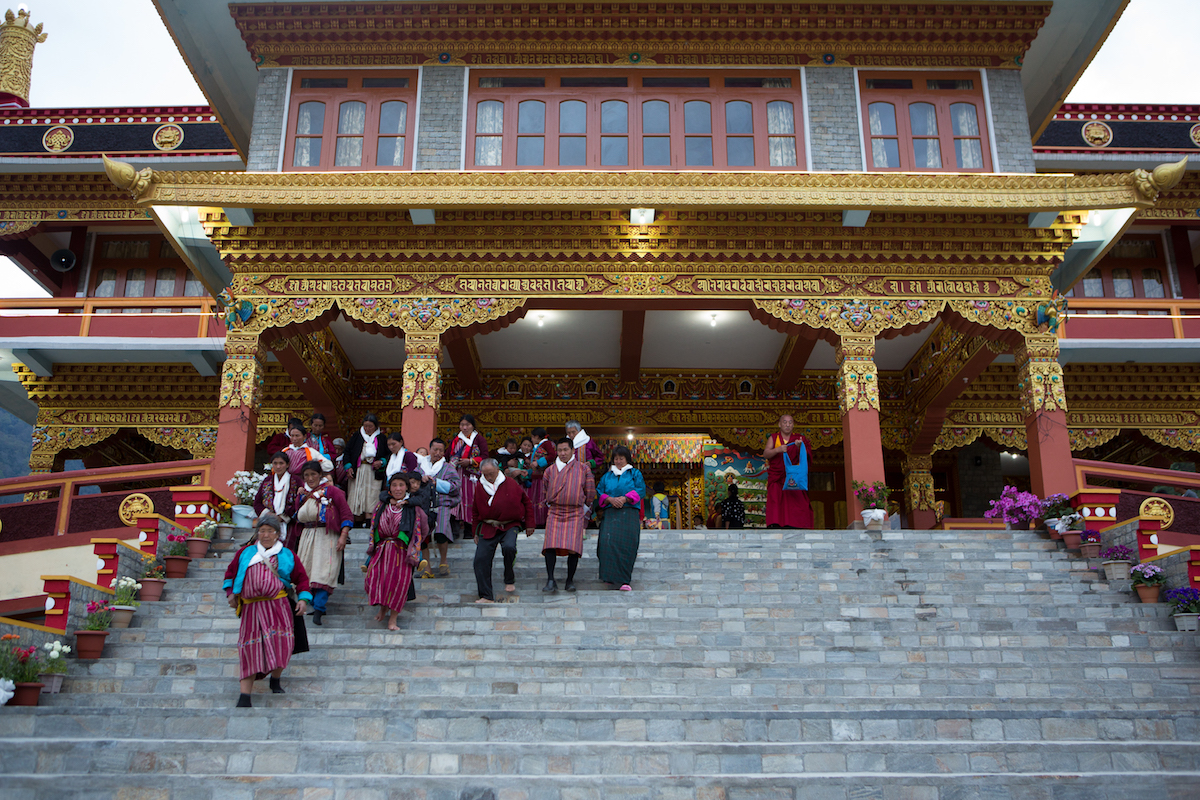Thupten Rinpoche, a teacher in the Gelug school of Tibetan Buddhism, has spent the last 10 years overseeing the construction of the Thupsung Dhargyeling Monastery in Dirang, India.
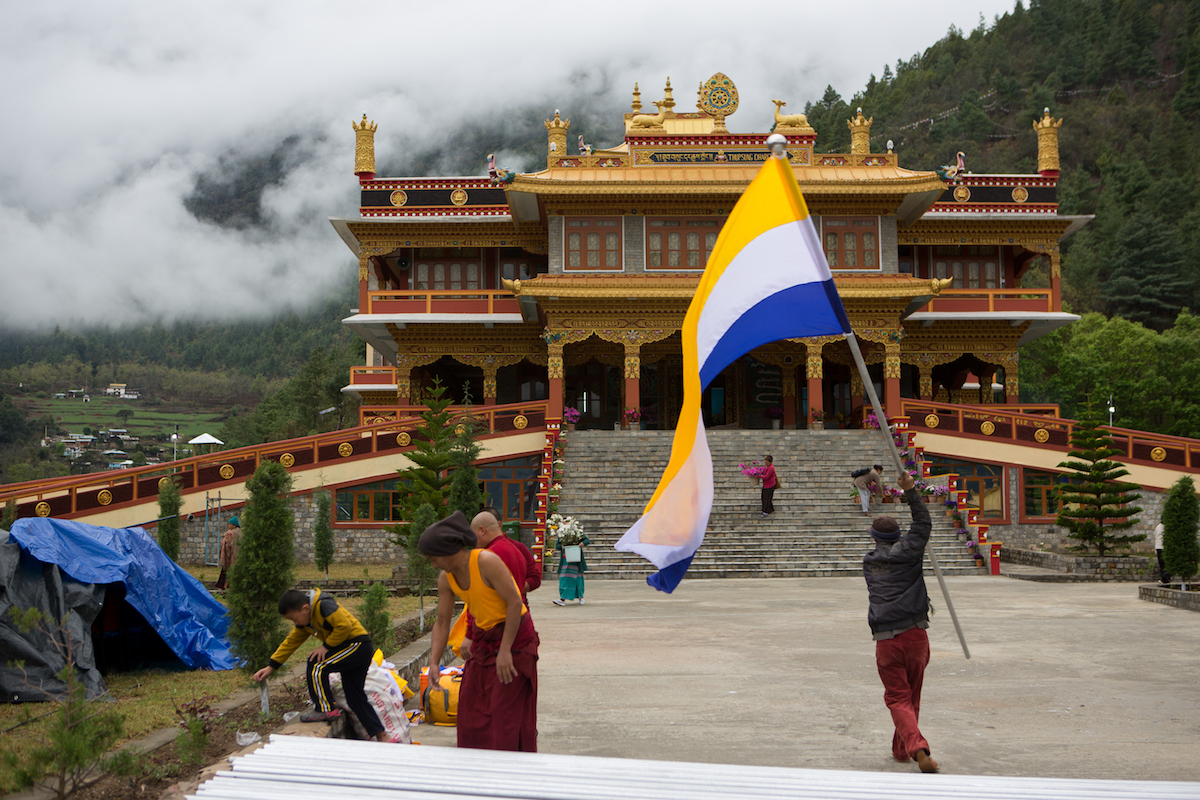
Dirang is a small village in the Indian state of Arunachal Pradesh, a disputed area that China also claims. Tucked away in the Himalayas, it’s not easy to get to. The closest airport is in Guwahati, a 15-hour journey by car over treacherous mountain roads. (It takes longer if there is snow, heavy rain, or fog, and there often is.)
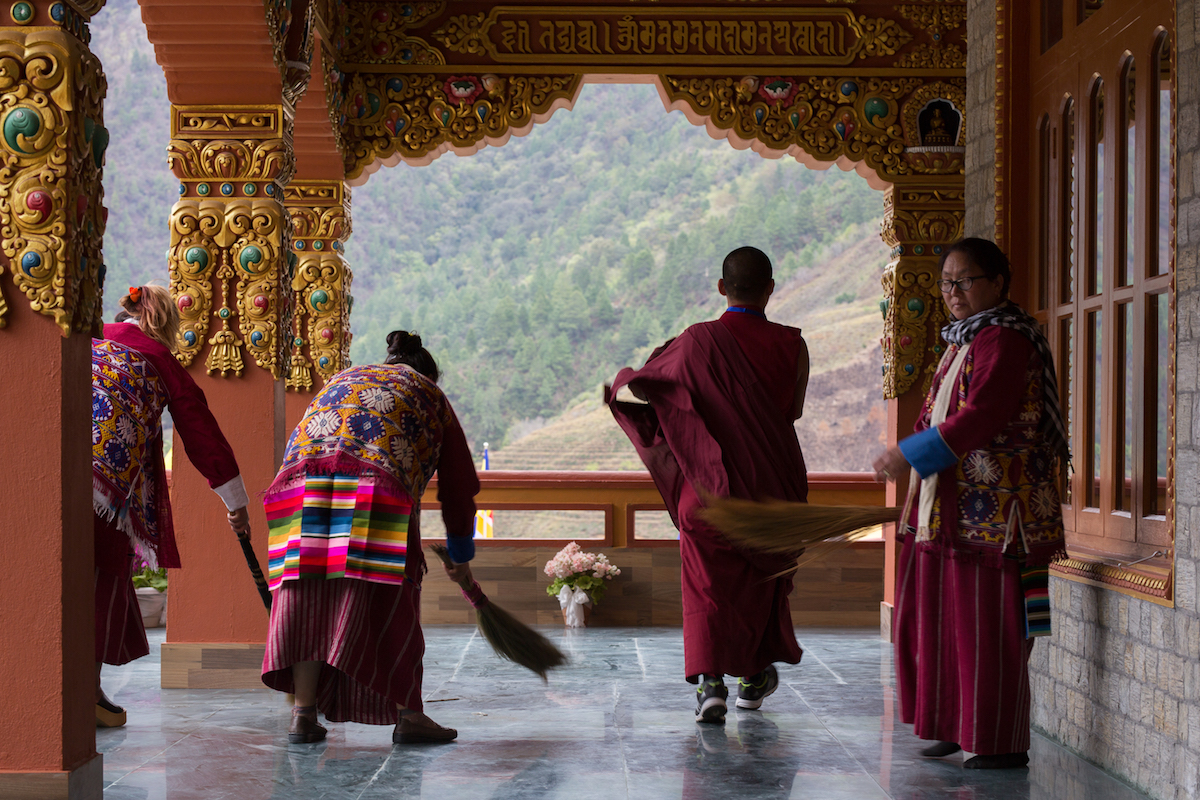
Thupten Rinpoche considers the monastery the biggest accomplishment of his life. The lama meticulously planned it, from the placement of 1,000 Buddha statues to the Wheel of Life mural on the back wall of the monastery, which is laid out as a landscape rather than a traditional circle.
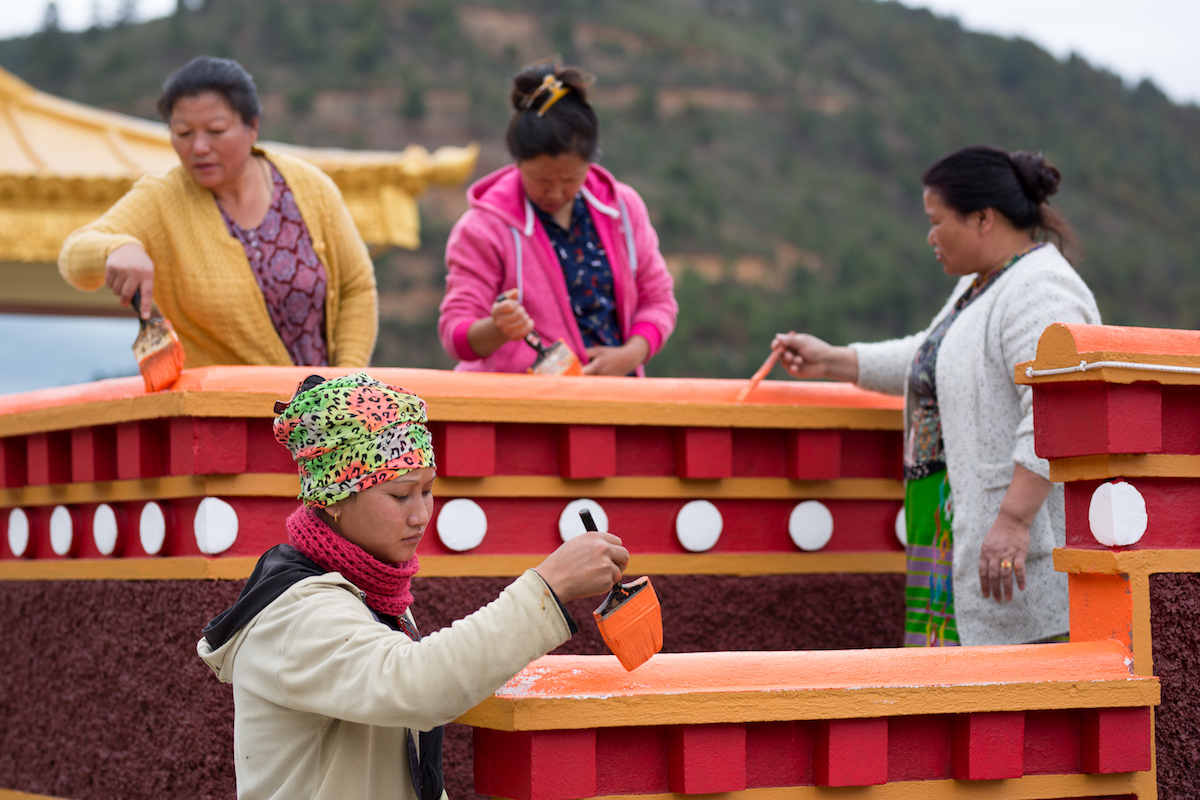
The monastery is perched on a hill above Dirang. Since the construction began, Dirang has prospered, providing jobs as well as a place of learning and worship, and the town’s population has increased. Unlike typical monasteries, Thupsung Dhargyeling places its focus on educating lay people in Buddhist scripture and practice.
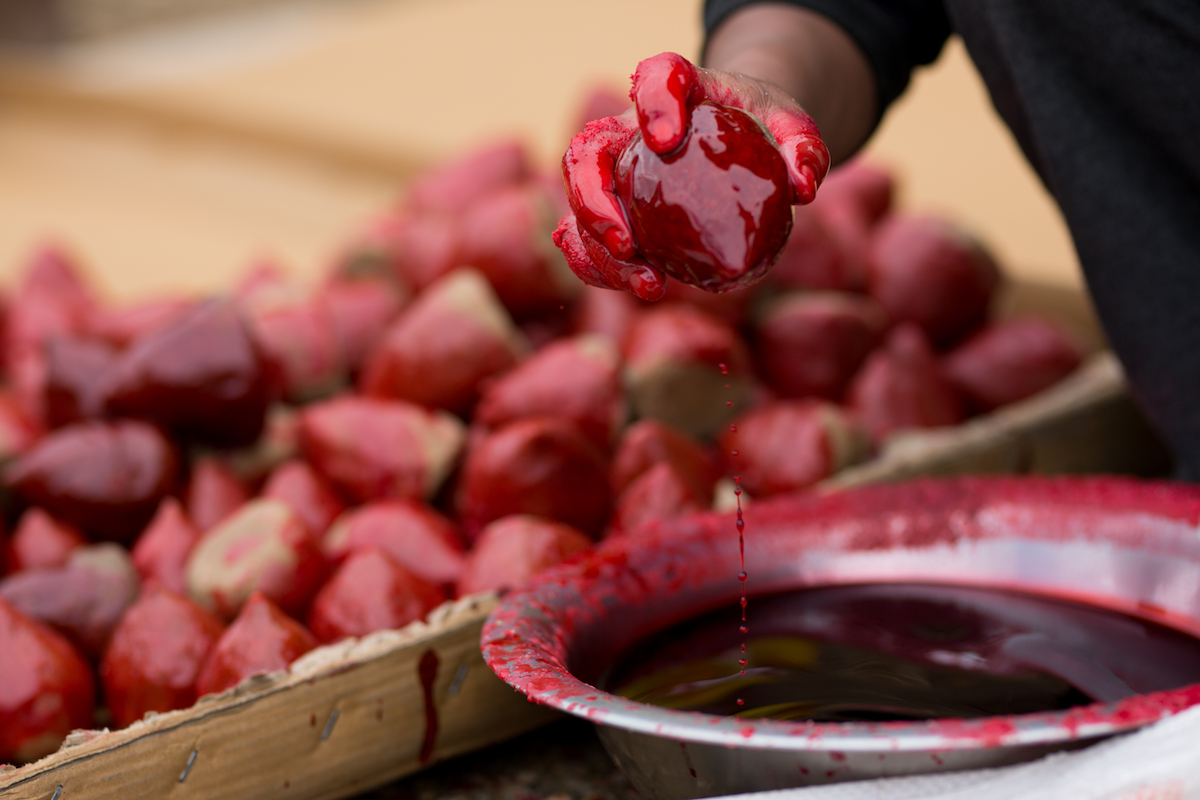
On April 5, 2017, the monastery was completed, and the Dalai Lama came to give his blessing.
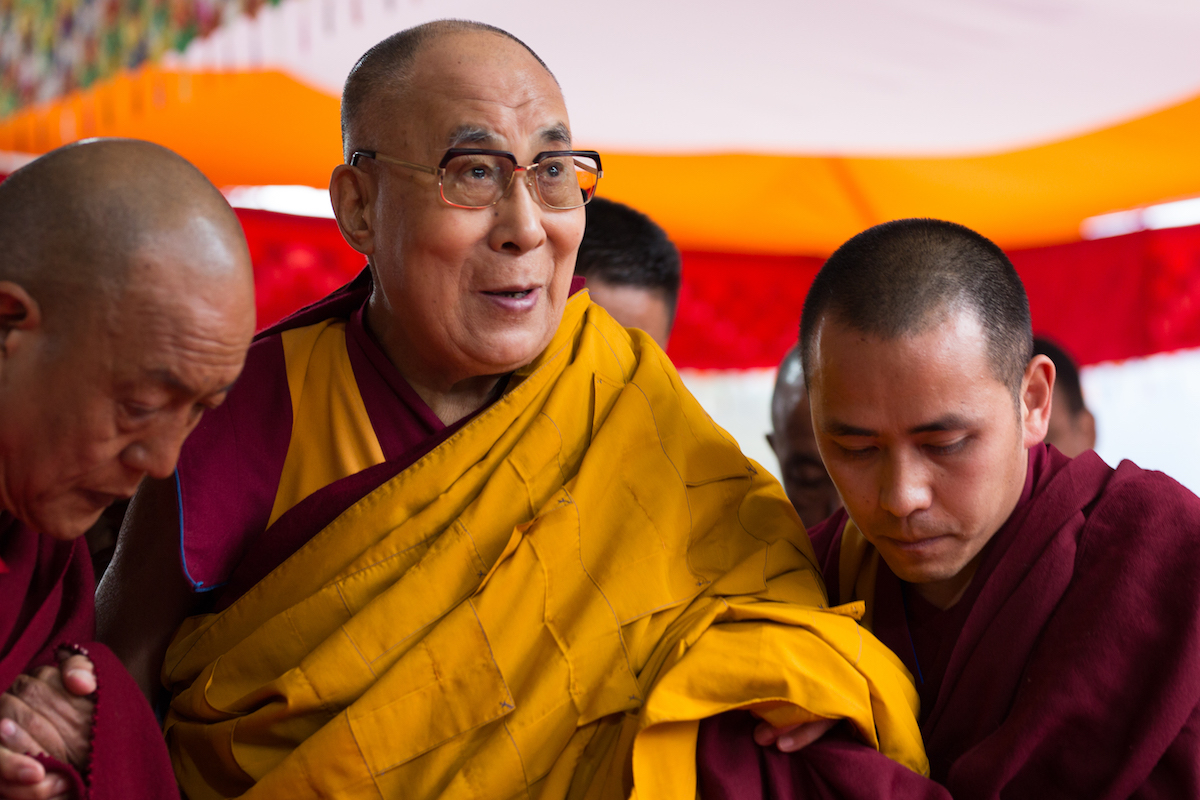
In the days leading up to his visit, monks and volunteers scrambled to put the finishing touches on the monastery. Walls received a final coat of paint, ornate temple doors were assembled, and engineers worked around the clock on an elevator that would take the Dalai Lama to his room at the top of the temple (every Tibetan monastery has a special guest room at the top that is reserved for His Holiness).
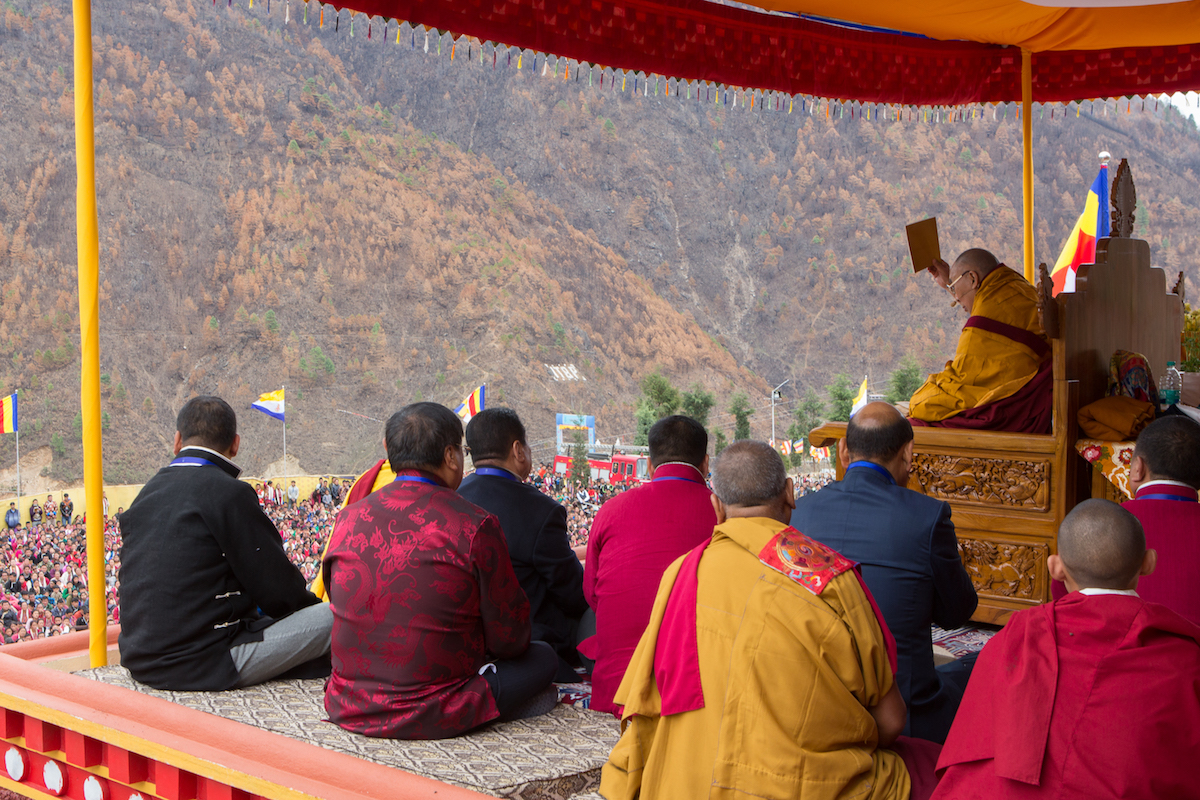
More than 20,000 people attended the monastery’s consecration ceremony and to hear the Dalai Lama teach.
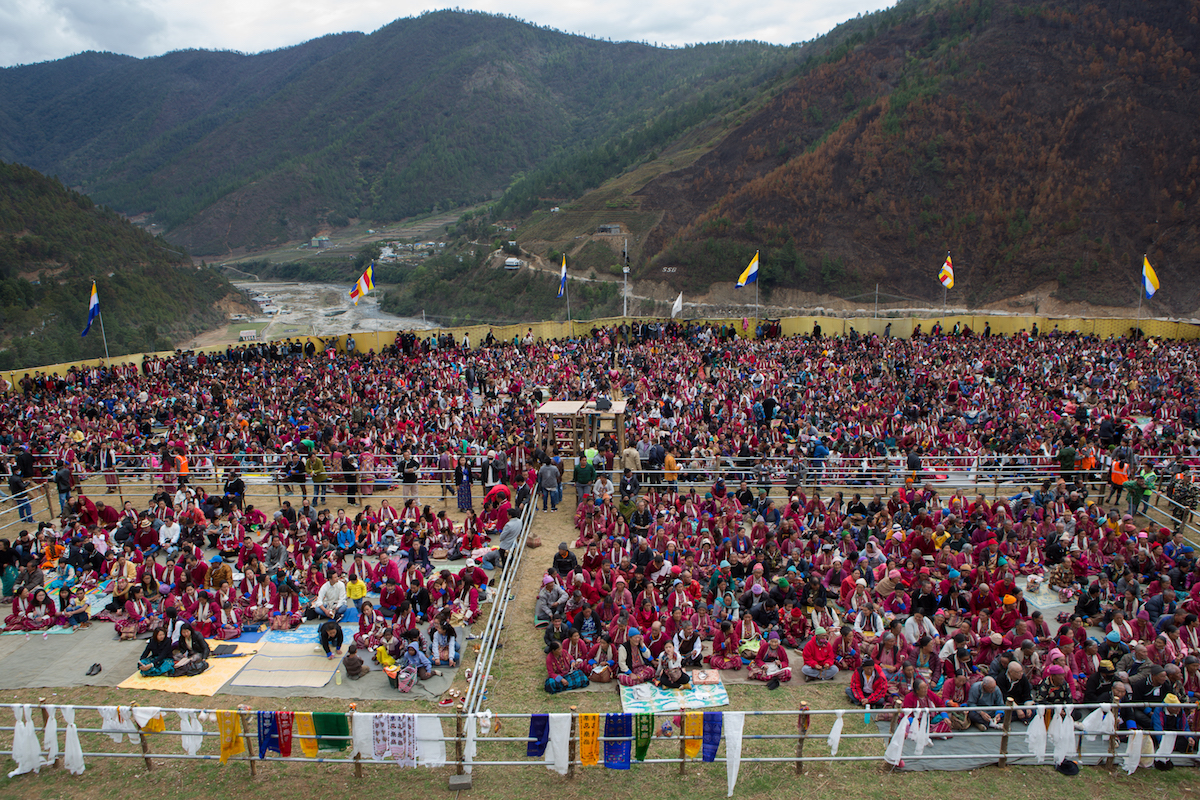
Security was tight, given the region’s disputed status.
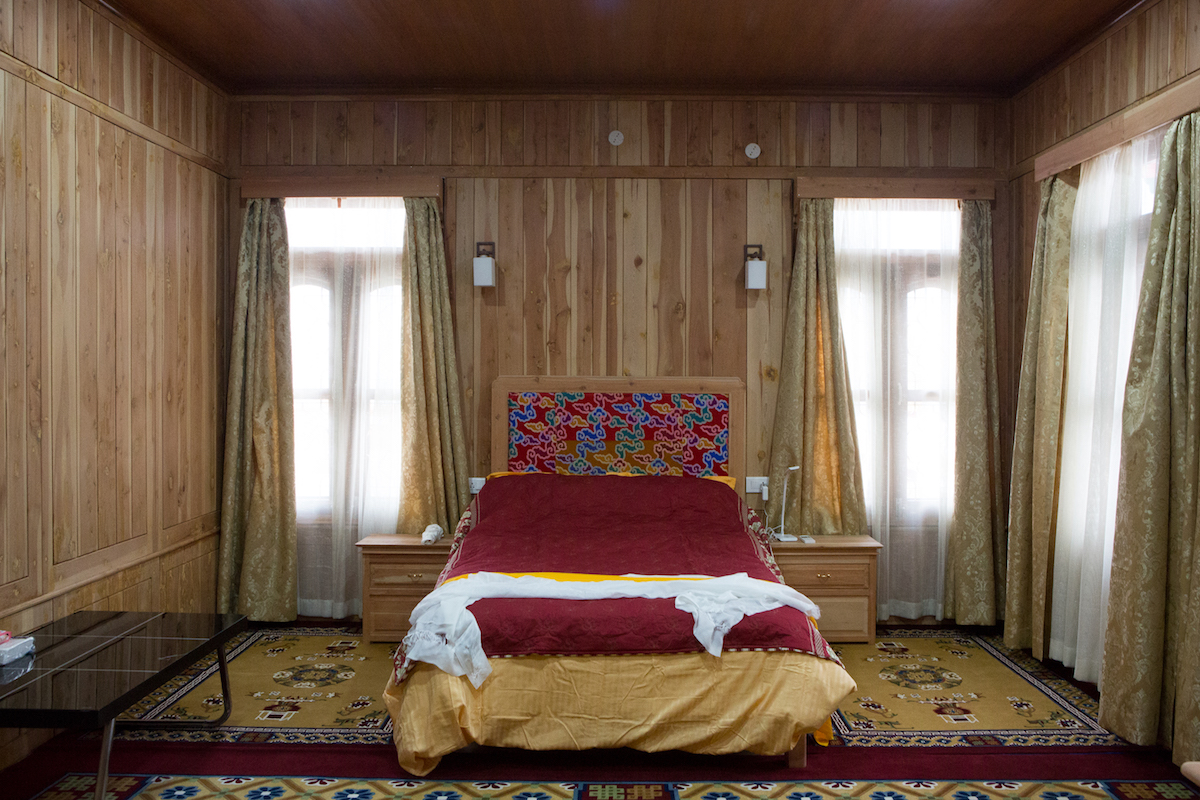
The Dalai Lama’s security team quickly moved him through crowds, not allowing anyone without permission to approach the Buddhist leader. Despite his bodyguards’ best efforts, however, the Dalai Lama picked people out of the crowd to connect with, as he nearly always does. He seems to most enjoy interactions with everyday people and foreigners who are unaware of the proper etiquette and interact with him on a more casual level.
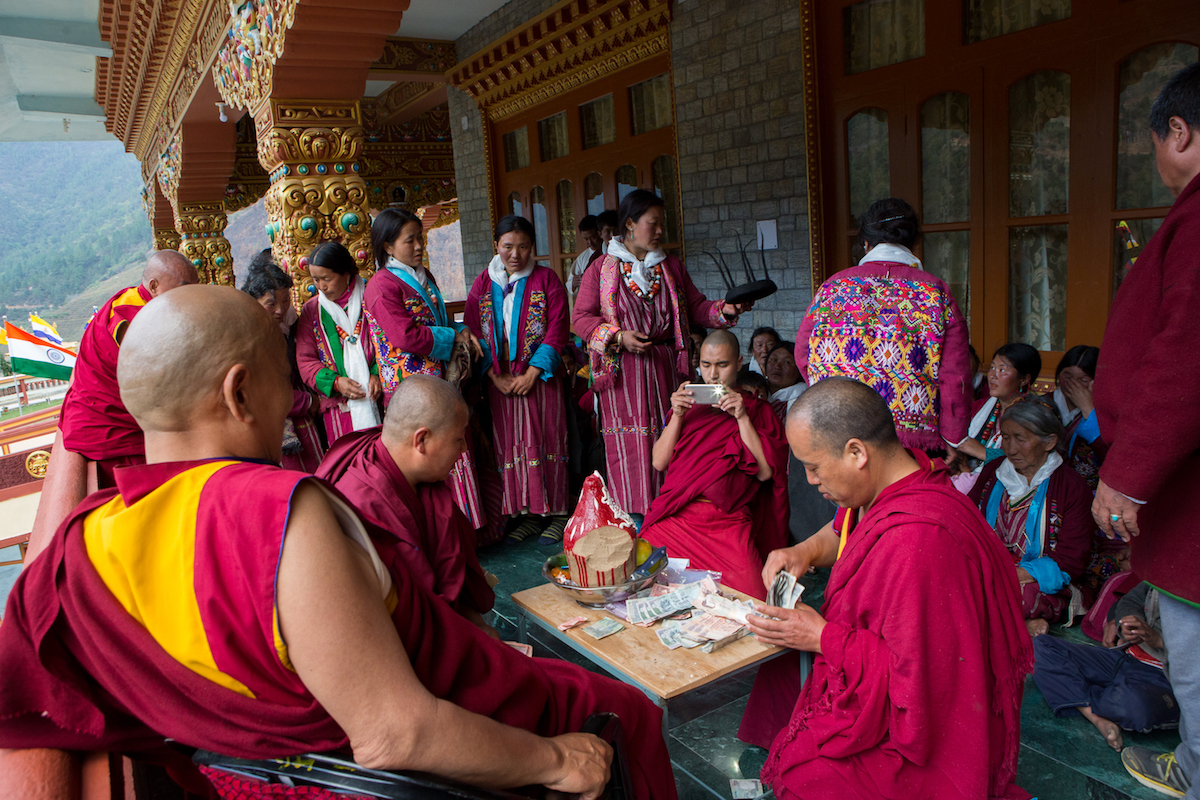
After the Dalai Lama left the monastery, so did the massive crowds and security team.
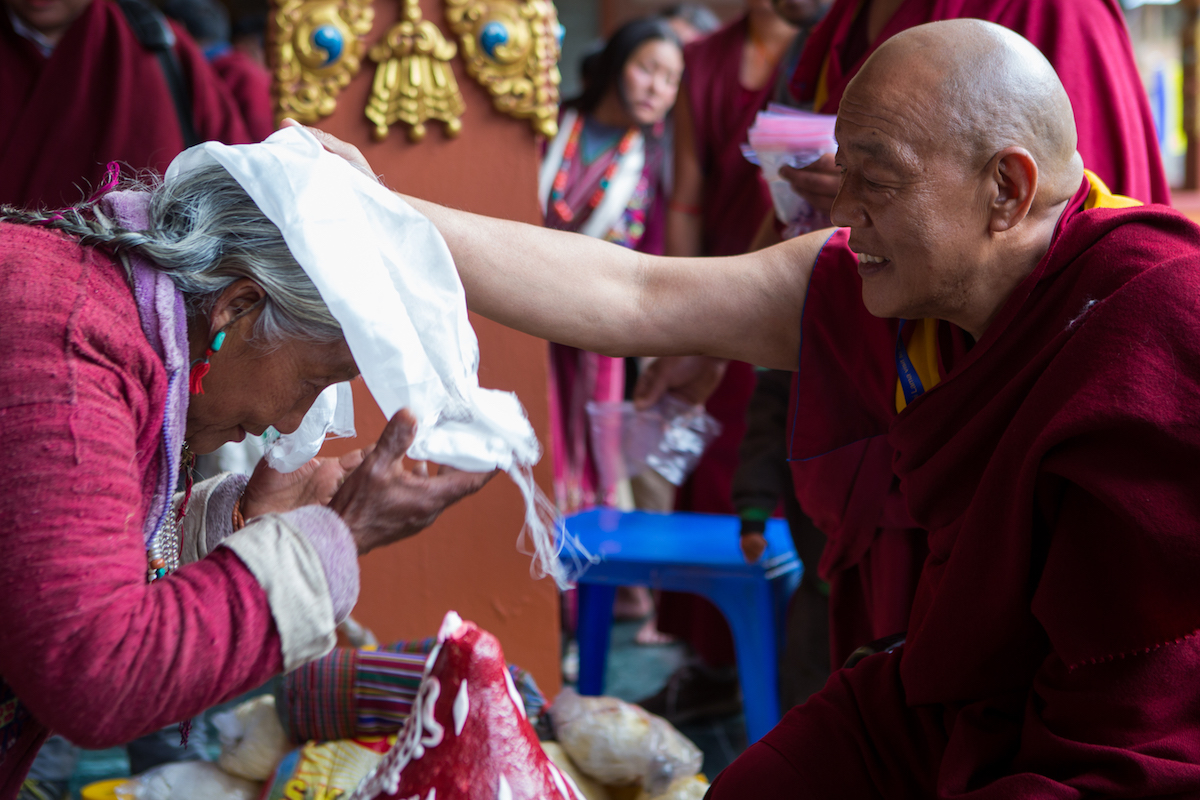
But a steady stream of pilgrims continued to arrive to make offerings to the new monastery and to Thupten Rinpoche, with one group traveling three days from their teacher’s birthplace in Bhutan. They brought offerings of butter, rice, and money, and performed traditional songs and dances for Thupten Rinpoche and the other monks into the late hours of the night, with the temple lights shining brightly and the melodies of Bhutanese folk songs floating over the Dirang valley.
